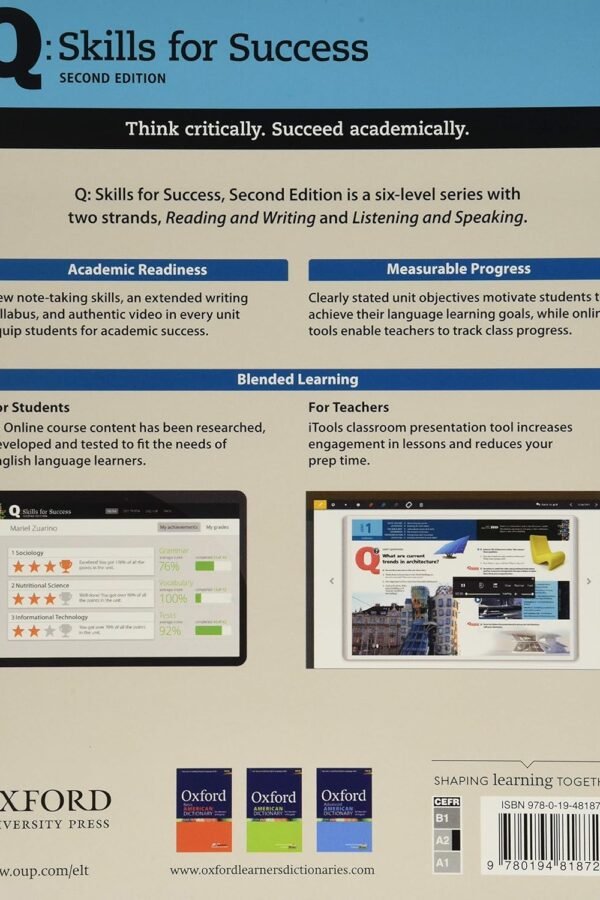In the world of job hunting, the question of how many jobs should be listed on a resume often arises. It is a delicate balance between showcasing one’s relevant experience and avoiding overwhelming the reader with an extensive career history. However, determining the optimal number of jobs to include can be a daunting task. That’s where LovJobs comes in. As a leading platform in career guidance and knowledge, LovJobs offers a wealth of information to help individuals navigate their job search. In this article, LovJobs explores the topic of how many jobs one should list on a resume, providing valuable insights from employers and recruiters. Whether you’re a seasoned professional or just starting your career, this article offers practical advice to improve your resume and increase your chances of landing that dream job.

Determining the Number of Jobs to Include
When creating a resume, one of the key decisions to make is how many jobs to include. Determining the appropriate number of jobs to list can be a challenging task, as it requires careful consideration of various factors. This article will guide you through the process of assessing your work experience, considering relevance to the position, analyzing the length of your resume, and provide insights into tailoring your resume based on your career level and addressing employment gaps.
Assessing your Work Experience
Before deciding on the number of jobs to include on your resume, it is essential to assess your work experience thoroughly. Take stock of all the positions you have held throughout your career, making a comprehensive list that encompasses your responsibilities, achievements, and duration of each job.
This assessment will give you an overview of your work history and help you evaluate which positions are most relevant to your current job search. It is important to consider the quality and significance of each role rather than focusing solely on the quantity of jobs.
Considering Relevance to the Position
When determining the number of jobs to include on your resume, it is crucial to consider the relevance of each position to the job you are applying for. Ask yourself whether each previous role contributes to showcasing your skills, qualifications, and experience related to the desired position.
Including jobs that align closely with the responsibilities and requirements of the job you are applying for will demonstrate your suitability for the role. However, it is generally recommended to avoid listing jobs that are unrelated or significantly different from the position you are currently pursuing.
Analyzing the Length of your Resume
Another factor to consider when deciding how many jobs to include on your resume is the overall length of the document. A concise and focused resume is more likely to capture the attention of hiring managers and recruiters, while a lengthy and cluttered one may be overwhelming and less effective.
Ideally, a resume should be no longer than two pages. However, in certain circumstances, a one-page or more than two pages resume may be warranted. It is important to carefully weigh the relevance and significance of each job listed against the overall length of your resume.
The General Rule of Thumb
While there is no one-size-fits-all answer to how many jobs to include on a resume, there are general guidelines that can help you make an informed decision.
One Page Resume
For most candidates, a one-page resume is considered highly effective. This format encourages you to focus on the most relevant and impactful experiences, showcasing your skills and qualifications concisely. It is particularly suitable for candidates with limited work experience or those applying for entry-level positions.
A one-page resume allows hiring managers to quickly review your qualifications and achievements, increasing the likelihood of your resume capturing their interest. It also demonstrates your ability to prioritize information and effectively communicate your expertise.
Two Pages Resume
A two-page resume is commonly acceptable for candidates with more extensive work experience, especially for mid-level professionals and individuals pursuing specialized roles. This format provides enough space to showcase previous positions, responsibilities, achievements, and professional development.
When opting for a two-page resume, it is essential to ensure that both pages are equally strong and that the information included is relevant to the job you are applying for. Avoid unnecessary details or repetitions and focus on highlighting your key accomplishments and qualifications.
More than Two Pages Resume
In general, it is advisable to keep your resume to a maximum of two pages. Going beyond this limit can be risky, as excessively long resumes are often seen as too comprehensive or burdensome for hiring managers to review thoroughly.
However, certain circumstances may justify a longer resume. For senior-level executives or professionals with vast experience, a more extensive document may be necessary to present a comprehensive overview of their career. In such cases, it is crucial to prioritize the most relevant information and ensure that the resume maintains a cohesive and easy-to-read structure.

Factors to Consider
When deciding on the number of jobs to include on your resume, several additional factors should be taken into account. These factors include the number of years of experience you have, the frequency of job changes throughout your career, and industry norms.
Years of Experience
The number of years of experience you have plays a significant role in determining the number of jobs to include on your resume. If you are just starting your career or have limited experience, it is generally recommended to focus on the most relevant and recent positions, while excluding any short-term or unrelated jobs.
As your years of experience increase, you can gradually include more positions on your resume. However, it is still important to prioritize quality over quantity and avoid overcrowding your resume with excessive details.
Job Hopping
Job hopping, or frequently changing jobs within a short period of time, can pose challenges when determining the number of positions to list on your resume. If you have a history of job hopping, it is advisable to carefully select the most relevant and impactful positions and avoid including every job you have held.
Hiring managers and recruiters are typically interested in seeing stability and commitment in candidates. To mitigate concerns related to job hopping, focus on highlighting the positions where you made significant contributions and achieved notable accomplishments. By presenting your experiences in a strategic and focused manner, you can demonstrate your value and potential regardless of the number of positions listed.
Industry Norms
Different industries may have varying expectations when it comes to the number of jobs to include on a resume. Some industries, such as technology or creative fields, may value diverse experiences and consider multiple job entries as a positive attribute. Conversely, industries that prioritize stability or longevity in positions may look for a more focused and consistent work history.
When determining the number of jobs to include on your resume, it can be helpful to research industry norms and understand the expectations specific to your field. Adapting your resume to align with industry standards can increase your chances of being perceived as a qualified and well-suited candidate.
Tailoring Your Resume for the Job
Once you have determined the appropriate number of jobs to include on your resume based on your work experience, relevance, and resume length, it is essential to tailor your resume to the specific job you are applying for. Customizing your resume allows you to highlight your most relevant experience, skills, and achievements, increasing your chances of standing out among other applicants.
Highlighting Relevant Experience
When tailoring your resume, it is crucial to emphasize your most relevant experience. Carefully review the job description and identify the key skills, qualifications, and responsibilities that the employer is seeking. Analyze your work history and identify positions or accomplishments that align closely with these requirements.
By focusing on your most relevant experience, you will effectively showcase your expertise and demonstrate your suitability for the position. Consider elaborating on specific projects, tasks, or achievements that highlight your ability to contribute to the company’s success in the desired role.
Matching Skills and Keywords
Another essential aspect of tailoring your resume is matching your skills and keywords to those mentioned in the job description. Many employers use applicant tracking systems (ATS) to screen resumes, making it crucial to include relevant keywords to increase the likelihood of your resume getting noticed.
Carefully review the job description for specific skills or qualifications that are repeatedly mentioned and ensure that these are prominently featured in your resume. This will demonstrate your ability to meet the employer’s criteria and make your resume resonate with the specific requirements of the position.
Showcasing Achievements
In addition to highlighting relevant experience and skills, it is important to showcase your achievements on your resume. Employers are not simply looking for a summary of your job duties; they want to see how you have made a positive impact in your previous roles.
When tailoring your resume, consider including specific achievements that demonstrate your ability to exceed expectations and deliver results. These achievements could include any awards received, targets surpassed, revenue generated, or successful initiatives you led. By emphasizing your accomplishments, you will differentiate yourself from other candidates and increase your chances of securing an interview.

Resumes for Entry-Level Candidates
For entry-level candidates, the approach to creating a resume may differ slightly from individuals with more experience. As an entry-level candidate, you may have limited work history, making it important to emphasize your education, relevant skills, internships, and extracurricular activities.
Emphasizing Education and Skills
Since you may not have an extensive work history, it is important to place a strong emphasis on your education and relevant skills. Include details about your degree, relevant coursework, academic achievements, and any certifications or additional training you have completed.
Additionally, highlight any relevant skills you possess, such as technical skills, language proficiency, or software proficiency. Emphasize your ability to learn quickly, adapt to new environments, and contribute effectively as a proactive team member.
Including Internships and Extracurricular Activities
Internships and extracurricular activities can significantly enhance an entry-level candidate’s resume. Include any internships you have completed, especially those that are directly related to the position you are applying for. Describe your responsibilities and achievements during these internships, showcasing your ability to apply your skills and contribute effectively in a professional setting.
Extracurricular activities, such as volunteering, leadership roles in student organizations, or participation in relevant projects, are also valuable additions to an entry-level resume. These activities demonstrate your commitment, teamwork skills, and ability to take on responsibilities outside of academics.
Resumes for Mid-Level Professionals
For mid-level professionals with a few years of work experience, tailoring your resume becomes even more critical. With a stronger work history to draw from, it is important to prioritize recent and relevant jobs, while also focusing on growth and leadership.
Prioritizing Recent and Relevant Jobs
When creating a resume as a mid-level professional, it is essential to prioritize your recent and relevant jobs. Start by listing your most recent position first, followed by the previous roles in reverse chronological order. This allows hiring managers to quickly assess your recent experience and gauge the progression of your career.
While including your earlier jobs can provide insights into your overall work history, it is crucial to place more emphasis on the positions that are most directly related to the job you are applying for. Highlight your responsibilities, achievements, and any advancements or promotions you have earned in these positions.
Demonstrating Growth and Leadership
As a mid-level professional, it is important to showcase your growth and leadership capabilities on your resume. Demonstrate how you have progressed throughout your career by highlighting increased responsibilities, successful projects, and any leadership roles you have held.
Provide specific examples of your ability to lead teams, solve complex problems, and drive results. Discuss how your contributions have positively impacted the organizations you have worked for, whether through increased efficiency, cost savings, or revenue growth. By highlighting your growth and leadership, you will present yourself as a valuable asset to potential employers.
Resumes for Senior-Level Executives
For senior-level executives, the approach to creating a resume is unique due to the strategic and influential roles typically held in this career level. When crafting a resume as a senior-level executive, it is important to focus on strategic roles, achievements, and measurable impact.
Focusing on Strategic Roles
When creating a resume as a senior-level executive, emphasize your strategic roles and responsibilities. Highlight positions where you have been responsible for setting organizational direction, developing long-term plans, or overseeing significant initiatives.
Describe your ability to shape corporate strategy, manage large budgets, and lead cross-functional teams. Showcase how you have contributed to the overall success of your previous organizations by aligning your activities with business objectives, driving growth, and improving operational efficiency.
Highlighting Achievements and Impact
For senior-level executives, it is crucial to highlight key achievements and the measurable impact you have made in your previous roles. Provide concrete examples of your ability to produce bottom-line results, such as revenue growth, cost savings, increased market share, or successful mergers and acquisitions.
Quantify your achievements whenever possible by including specific figures, percentages, or other relevant metrics. This demonstrates your ability to deliver tangible results and makes a strong impression on potential employers who are seeking senior leadership talent.
Addressing Gaps in Employment
Gaps in employment can occur for various reasons, and it is essential to address them properly on your resume. By effectively explaining employment gaps, you can alleviate any concerns and assure potential employers of your commitment and suitability for the position.
Months-Long Gaps
If you have experienced months-long gaps in your employment history, it is important to be honest and provide a clear explanation on your resume. Gaps in employment can be due to personal reasons, job search challenges, or other circumstances that may have temporarily interrupted your career progression.
When explaining months-long gaps, it is advisable to mention any relevant activities or initiatives you engaged in during that time. This could include volunteer work, freelance projects, freelance consulting, or further education and training. By illustrating your continued engagement and commitment to professional development, you can effectively address any concerns and demonstrate your dedication.
Year-Long Gaps
If you have experienced year-long gaps in your employment history, it is crucial to provide a more detailed explanation on your resume. Year-long gaps may raise additional questions from potential employers, and it is essential to provide a clear and concise clarification.
When addressing year-long gaps, focus on activities or experiences that showcase your continued professional growth and relevance to the desired position. This could include participating in industry conferences, attending relevant workshops or seminars, undertaking freelance work or projects, or volunteering in relevant capacities. By effectively demonstrating your commitment to ongoing learning and engagement, you can mitigate concerns about extended gaps in your employment history.
Explaining Career Changes
Career changes can also lead to gaps in employment, and it is important to provide an explanation that highlights the relevance and transferability of your skills and experience. When facing a career change, emphasize any transferable skills, additional training or certifications you have obtained, or relevant accomplishments that showcase your ability to adapt and succeed in the new field.
Highlight any experiences or activities that demonstrate your commitment to the new career path, such as internships, volunteer work, or networking events. By demonstrating your passion and dedication to the new field, you can present yourself as a capable and driven candidate, regardless of any employment gaps caused by career changes.
Considering Different Resume Formats
In addition to the number of jobs to include on your resume, it is important to consider the appropriate resume format that effectively showcases your qualifications and experience. There are three common resume formats: chronological, functional, and combination.
Chronological Resume
The chronological resume format is the most common and straightforward format. It presents your work history in reverse chronological order, starting with your most recent position. This format is suitable for candidates with a stable work history and for those who wish to highlight their career progression and growth.
A chronological resume allows hiring managers to easily follow your career path, understand your employment timeline, and assess your experience in a coherent manner. It is effective for showcasing how your skills and responsibilities have evolved over time, making it particularly valuable for mid-level professionals and senior executives.
Functional Resume
The functional resume format focuses on highlighting your skills and accomplishments rather than emphasizing the chronological order of your work history. It places more emphasis on your abilities, transferable skills, and specific achievements in various functional areas.
This format is useful for candidates who have gaps in their employment history or those who are transitioning into a new career field. By showcasing your skills and accomplishments upfront, you can capture the attention of hiring managers and demonstrate the value you can bring to the desired position.
Combination Resume
The combination resume format combines elements of both the chronological and functional formats. It provides a comprehensive overview of your skills, qualifications, and work history. This format is particularly effective for candidates with a diverse work history and a combination of relevant skills and accomplishments.
A combination resume showcases your skills and achievements prominently, while also providing a clear timeline of your work experience. It allows you to emphasize the most relevant jobs and achievements, while still demonstrating consistency and career progression.
The Importance of Quality Over Quantity
When creating a resume, it is essential to prioritize the quality of the information included rather than focusing solely on the quantity of jobs listed. By prioritizing relevance, coherence, and consistency, you can create a resume that effectively showcases your qualifications and increases your chances of securing an interview.
Prioritizing Relevance
When deciding how many jobs to include on your resume, always prioritize relevance. Include positions that are directly related to the job you are applying for and highlight the accomplishments and responsibilities that align with the specific requirements of the position.
By prioritizing relevance, you can ensure that your resume captures the attention of hiring managers and is perceived as a valuable document that showcases your suitability for the desired role.
Ensuring Coherence and Consistency
Another important aspect of creating an effective resume is ensuring coherence and consistency throughout the document. Regardless of the number of jobs listed, it is crucial to maintain a clear and logical structure that allows recruiters to follow your career path and understand your qualifications.
Organize your resume in a clear and easy-to-read manner, using appropriate headings, bullet points, and formatting techniques. Make sure that the information presented for each job is concise, accurate, and consistent in terms of formatting and style.
Proofread your resume carefully to ensure that there are no spelling or grammar errors and that the document maintains a professional tone. A well-structured and error-free resume enhances your credibility and makes a positive impression on potential employers.
In conclusion, determining the number of jobs to include on a resume requires careful consideration of various factors. Assess your work experience, prioritize relevance, and analyze the length of your resume to make an informed decision. Tailor your resume for the job by highlighting relevant experience, matching skills and keywords, and showcasing achievements. Consider different resume formats and prioritize quality over quantity by ensuring relevance, coherence, and consistency throughout your document. By following these guidelines, you can create a comprehensive and impactful resume that effectively communicates your qualifications and increases your chances of success in your job search.














